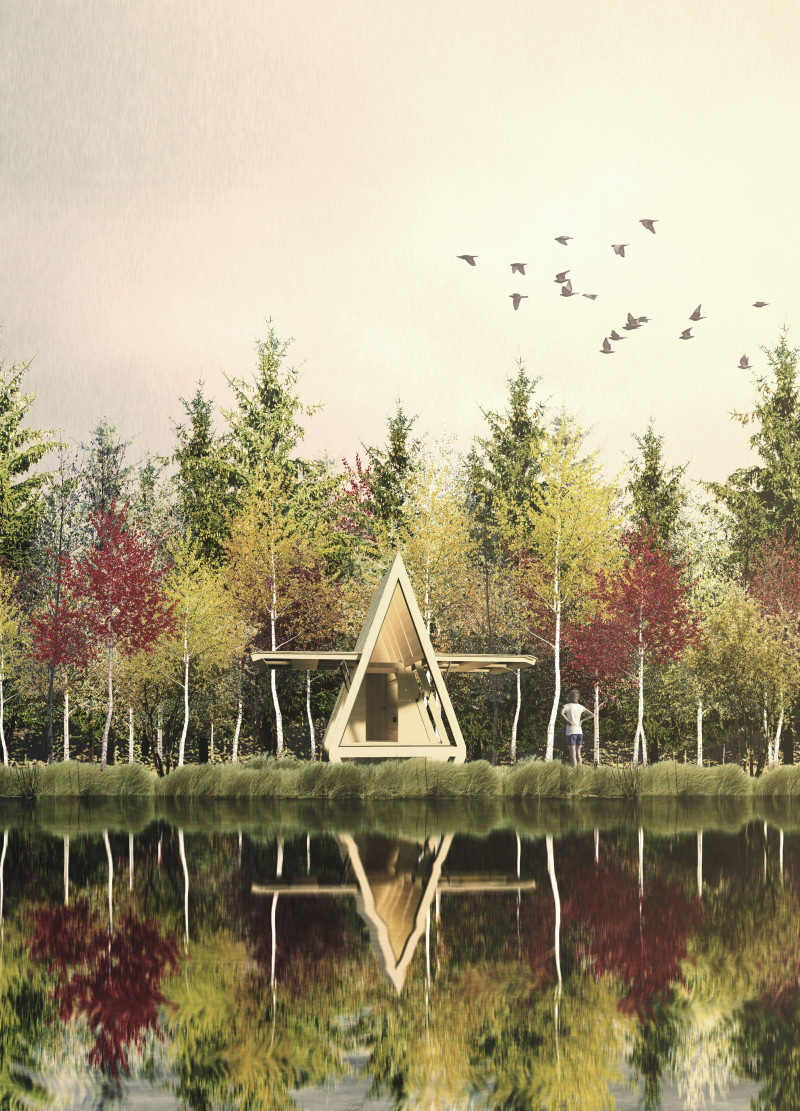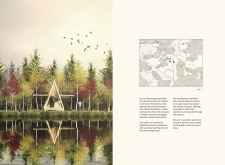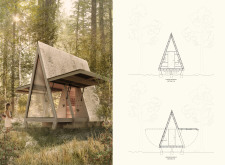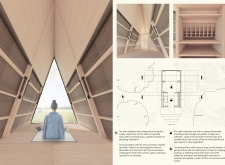5 key facts about this project
The Tea Hut's structure features an A-frame design characterized by a pitched roof, reminiscent of traditional Latvian dwellings. This choice of form not only contributes to the aesthetic quality but also enhances the building's performance in terms of insulation and water management. A significant aspect of the project is its emphasis on local materials, which include sustainably sourced pine wood, cork for interior linings, and acrylic for expansive windows. These materials foster a sustainable approach to architecture, minimizing the environmental impact of construction while offering durability.
A central function of the Tea Hut is to provide an adaptable space that encourages personal reflection and communal activities. The interior layout accommodates various uses, including designated areas for meditation and communal tea brewing. The integration of large acrylic windows fosters interaction with the surrounding landscape, allowing natural light to penetrate the interior while connecting visitors with the forest environment. This aspect of design promotes a sense of openness and inclusivity, catering to different visitor experiences.
What sets the Tea Hut apart from many similar architectural projects is its strong connection to local traditions and its commitment to sustainability. The design emphasizes simplicity and functionality while inviting interaction with the natural world. Its dual purpose as both a solitary retreat and a communal gathering space allows for flexible use, accommodating individual needs alongside shared experiences. Such unique design approaches demonstrate a thoughtful consideration for the cultural context and environmental implications of architectural practice.
The incorporation of lightweight panels in the construction ensures ease of assembly and transport, further contributing to the project’s sustainable narrative. The emphasis on using natural materials like cork and pine not only enhances the comfort of the space but also reflects an understanding of ecological stewardship. This approach contrasts with conventional materials often adopted in modern architecture, showcasing an alternative paradigm focused on harmony with the environment.
For those interested in the specifics of the Tea Hut project, further exploration of architectural plans, architectural sections, and architectural designs is recommended. These elements offer additional insights into the innovative design ideas employed, illustrating how the project effectively merges form and function while respecting its geographical and cultural context.

























